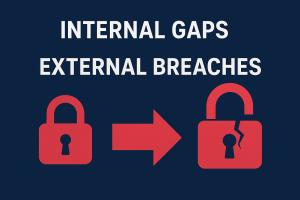Business Continuity Plan- What It Is and Why You Need One: a blog about what BCP actually is along with why its important for businesses.
If you’re a small business and think that disasters are only for large organizations, then think again. They can wreak havoc on your business as well. Even if your organization is not directly affected by a disaster, your suppliers or customers may be affected which can put you in trouble as well..
Business continuity planning (BCP) ensures that your business can continue operations even when it unexpectedly encounters downtime or disasters. BCPs rely on two things: human actions and technical systems. While there are a number of technical systems that are usually incorporated in a BCP, email is by far the most important system as it serves as your primary communication channel with customers and business partners.
The purpose of Business Continuity Planning (BCP)
A BCP is an overarching plan that describes how an organization can recover from a disaster event and resume their operations as quickly as possible with minimal downtime. The goal of BCP is to prevent losses from such events and enable the company to remain competitive in the market even after a crisis. . It also determines what systems are critical for business recovery during downtime.
Business continuity plans (BCPs) identify and prepare for threats to your operations, such as power outages, natural disasters, cyber-attacks, and other disruptions. Continuity plans also ensure that workers can continue to work in a safe environment.There are many reasons why your company needs to have a detailed business continuity plan in place. Here are some of them:
These plans help you:
- Identify the potential internal and external threats to your business.
- Decide which business processes are most important to keep running.
- Recover from a disaster or major incident quickly so you can resume normal operations with minimal downtime.
- Business continuity planning is a crucial part of any business, especially if your company is vulnerable to large-scale disasters or other emergencies that could disrupt normal operations.
There is no one-size-fits-all BCP, but it should include:
- A risk assessment of all potential threats of your business, including things like cyber attacks and natural disasters. This should include an analysis of how severe those risks would be if they happened.
- A list of critical business functions and the resources required to maintain them, including people, locations and supplies needed to keep these processes running smoothly.
- A strategy for communicating with employees, customers and suppliers during a disruption in normal operations. This should include protocols for communicating via traditional channels as well as social media platforms if traditional communication
When disaster strikes, you need to know that your employees will be safe, and you can keep your business running.
A comprehensive business continuity plan includes all the steps necessary to help ensure that your company will survive and thrive after a disaster.
The plan should cover all aspects of your operations, including human resources, information technology and finance. It should outline the steps you need to take now so you can quickly recover from a disaster and keep your business running smoothly.
Creating a business continuity plan is the first step business continuity management starts with planning how to maintain your critical functions (e.g., IT, sales, and sport) during and after a disaster, then building it into the way you do business.
Creating a BCP involves:
- Threat Analysis: identifying threats that could disrupt the flow of operations in the short-term and long-term;
- Role assignment: identifying specific roles for each employee and management level;
- Communications: creating an internal communication strategy;
- Backups: ensuring every critical function has a backup plan;
- Disaster recovery: creating detailed, step-by-step plans for how to recover from a disaster;
- Training: helping every employee learn their role in the event
Business continuity planning is a set of activities to be undertaken by every organization, but specially by IT firms, to ensure that they can restart operations after a disaster has hit them. The plan is made of four phases: preparation, prevention, response and recovery. Even if natural disasters are the most common reason for having a BCP in place, it will help the firm from any other kind of incident or crisis that could disrupt its operations. Connect with us for more information.






